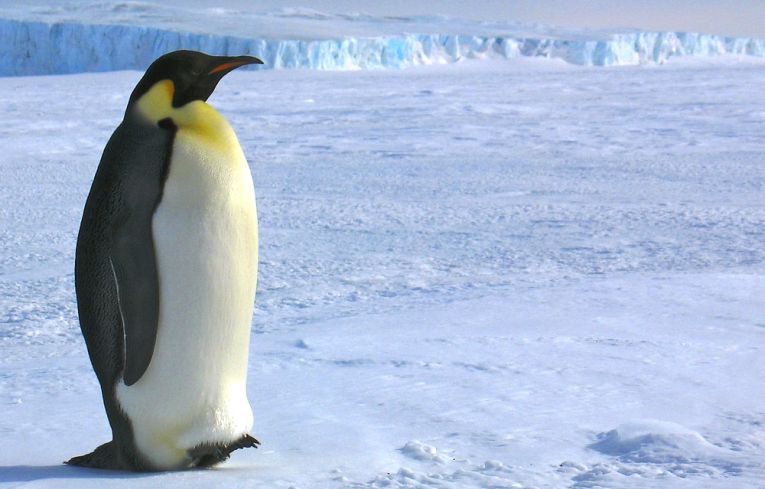With so much giant megafauna in the past, the existence of a fossil giant penguin might be seen as deja vu. The emperor, Aptenodytes forsteri, however, is living evidence that the Antarctic has been the niche for some very large birds that are worthy of much more study. It stands at 1.1m with a mass of 50kg. The problems we now have in conserving this unique species are covered here in - The emperors have no ice.
The new species, Palaeeudyptes klekowskii is the biggest of several fossil species from Seymour island, off Antarctica's Graham Peninsula and also in Peru (There, Icadyptes salasi was a mere 1.5m). The only remains are tarsometatarsus and humerus bones, but a mass of 115kg and the height of a human (2.01m, according to the researcher, Acosta Hospitaleche, is an estimate of size that experts have assessed for this phenomenal creature. Let's hope more bits are found soon.
Colossus penguin would have survived, with its close relatives, on a fish diet provided by plankton-rich currents flowing much as in present-day Antarctica. The climate has been estimated too, with a Tierra del Fuego-like temperature and rainfall. Size would probably have given a selective advantage, as this species would have been able to dive for 40 minutes, much longer than an emperor with half the size of its lungs.
The period in which all of these species lived was distant. Big Klekowski lived 37mya, but there is a possible link with recent and present-day Aptenodytes, to explain how these wonderful life styles evolved up to the present. Keep working, Acosta, because we know Palaeeudyptes gunnari and up to 13 other species filled those ancient Antarctic niches.










